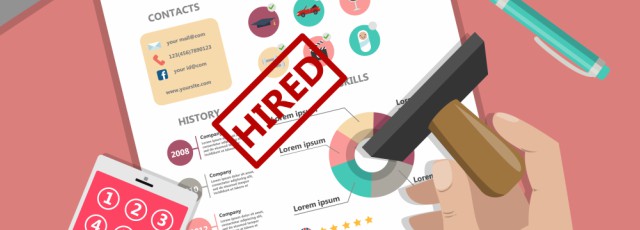QuickBooks is made up of Lists. The most important list in QuickBooks is the Chart of Accounts; it creates the framework for your financial reports from your Balance Sheet to your Profit and Loss statement and your statement of cash flows. It also creates the infrastructure for your budgets or revenue plan.
Learn about the Chart of Accounts in QuickBooks with Rhonda Rosand, CPA or New Business Directions, LLC.
 Setting expectations in your business is essential to gain the trust of your customers, avoid conflicts, and maintain a high level of customer service. One way to set expectations is to clearly state policies that are customer-facing. Many of these are accounting policies that we can help you with. The following policies are ones that every business should clearly publish.
Setting expectations in your business is essential to gain the trust of your customers, avoid conflicts, and maintain a high level of customer service. One way to set expectations is to clearly state policies that are customer-facing. Many of these are accounting policies that we can help you with. The following policies are ones that every business should clearly publish.
Refund Policy
When customers purchase your products or service and don’t get what they expect, what is their recourse? Your refund policy should clearly state which products and services are refundable. Do customers need to physically return the product in-store or via shipping? What if it’s a service? Are they refunded in cash or credit card? Or is it a store credit? Is there a deadline for refunds?
All of these questions should clearly be outlined in your refund policy. Your website is a great place to publish this information and an abbreviated form of your refund policy should be outlined on customer receipts.
Customer Complaints
If your customer has a complaint, how should they submit it? Is there a hotline to call, a suggestion box, or a form to fill out? If your business and employees are licensed, is there a government agency to write? A notice should be posted on your website and in your physical location describing where to submit complaints.
Shipping Policy
If you ship physical goods to a customer location, what is the cost of shipping? What is the expected delivery time? A shipping policy explains this as well as what can go wrong: If the item was never received, what should one do? Must you sign for a shipment? If you return a shipment, who pays the shipping? If an item is received damaged, how do you file a claim?
Payment Methods
What forms of payment will you take? If you take a check, what ID does the customer need to show? Do you take some of the newer forms of payment such as Apple Pay or cryptocurrencies? How do gift cards work?
Past-Due Accounts
If a customer doesn’t pay their bills on time, they should know what to expect. Will interest be charged? Will the account be sent for collections? Will someone break the customers’ legs? Will future purchases be cancelled or require a C.O.D. (cash on delivery) payment?
You might not think of your accountant when it comes to writing these policies, but you should; we can help. A good accountant can help you craft these customer service policies so that your communications and expectations with customers are better than ever.
 Every business has customers, and while they all are important, most entrepreneurs will agree that some customers value your business more than others. This may be due to the amount of revenue they bring in, their ability to refer new customers to you, the interesting challenges of the business, or another factor. It makes sense to identify these people so you can spend more time with them or at least acknowledge them in some way.
Every business has customers, and while they all are important, most entrepreneurs will agree that some customers value your business more than others. This may be due to the amount of revenue they bring in, their ability to refer new customers to you, the interesting challenges of the business, or another factor. It makes sense to identify these people so you can spend more time with them or at least acknowledge them in some way.
How do you find out which customers have generated the most revenue with you? If you store data in your accounting system, you can run a report to generate the data you need. In QuickBooks, the report is called the Income by Customer Summary Report. In Xero, it’s called Income by Contact. If you do not store data in your accounting system, you may be able to generate a report from your billing system, shopping cart, or point-of-sale system.
The reports look like this: each row holds the customer name and the Income column holds total revenue. If your system allows you to sort the revenue field, do this in descending order. If not, you can export the data to Excel and then sort it.
Once you’ve sorted the data, the answer is right in front of you. Your top customers based on revenue will show in order. These are the people you may want to consider spending more time with. Schedule periodic lunches with them, give them a call on a regular basis, and send them a gift or handwritten thank you note once in a while. The report helps you organize your connection points so you don’t miss an opportunity to reach out to an important customer.
Run this report on a regular basis so that you’re focused on nurturing the most important relationships in your business. You can also look at trends to see if you’re losing revenue over time or gaining revenue with new customers. You can reach out to customers who are spending less with you to try to save the relationship before it’s too late. And you can get to know new customers who are growing with you so that you can acquire even more business.
Make this report a regular activity in your business to stay close to what your customers are doing with you.
 Having repeat customers is essential to many businesses, and the key to keep customers coming back is to provide them with great service. Here are five ideas to rate your business’s savvy when it comes to serving customers well.
Having repeat customers is essential to many businesses, and the key to keep customers coming back is to provide them with great service. Here are five ideas to rate your business’s savvy when it comes to serving customers well.
- Make a great first impression.

When customers make a purchase from you, make them feel great about it by sending them a series of welcoming and onboarding emails. Congratulate them on the purchase, let them know how to get the most out of their new purchase, and encourage them to connect with you on social media and your mailing list. Thank them for their business.
- Measure response time.
How fast do you answer prospect and customer questions? Social media has changed the game. Customers who reach out via social media platforms, their phones, chat, or messaging apps expect an immediate  answer. Facebook even gives a badge to businesses who respond quickly and consistently.
answer. Facebook even gives a badge to businesses who respond quickly and consistently.
Not only do businesses need to monitor messages coming in from a record number of places – email, phone, web forms, chat, social media, and more – they need to respond faster than ever.
Without measuring your response time, it’s hard to know how you’re doing, so putting measures in place is the first step to improving this customer service metric.
- Publish clear policies.
Good service starts with setting clear expectations. Before a customer buys from you, they should be able to know what your return policy is in case something goes wrong. Some of the policies that should clearly be published online as well as at all customer-facing business locations include:
- Returns policy: If the product or service is not as expected, can the customer obtain a refund? Is there a re-stocking fee? What about shipping? Cash back vs. store credit?
- Shipping policy: Most people expect free shipping these days. They will want to know what it costs and how long will it take to get the item.
- Terms of service: Are there any limitations to the product? Or legal items that need to be communicated?
- Privacy policy: All customers will be giving you private data. They will want to know if it’s secure, if you share it with anyone, and if you are compliant with laws like GDPR (Europe), the CAN-SPAM act (US), or CASL (Canada).
- Encourage feedback.
Your best ideas for new products and services can come from your existing customers. Ask for feedback by sending satisfaction surveys and requests for testimonials and reviews. Read what they have to say about your service so that you can make improvements as needed. Respond and thank them for the feedback
- Check your ego at the door.
As small business owners, sometimes we need to be humble, especially when things go wrong. Be generous with apologies; it will go a long way toward improving relations. If you’re at fault, admit it and make it right. Even if you’re “right,” find a way to explain so that they feel good about you and your business.
Delivering great customer service can be a huge competitive advantage for your business. How does your business stack up against these five ideas? Try them, and watch your business grow.

 Can you believe that half of 2019 is gone already? That means it’s a great time to take stock of how your business has done for the first half of 2019 so that you can meet your financial goals for the entire year.
Can you believe that half of 2019 is gone already? That means it’s a great time to take stock of how your business has done for the first half of 2019 so that you can meet your financial goals for the entire year.
On Track for Sales
Are you on track to reach your 2019 revenue and profit numbers? The first step is to check your 2019 budget numbers for total revenue. (Don’t have a budget? – Check with us; we’d be delighted to discuss planning with you.)
Next, get your Income Statement for June 2019 Year-to-Date and check the revenue figure. Are you on track with your budget, or are you halfway there revenue-wise, accounting for seasonality? If so, pat yourself on the back! If not, what promotions will you put in place to boost your growth for the rest of 2019?
On Track for Profit
Looking at the same Income Statement, check your net income figure. Are you on track with what you planned? If so, great! If not, the reason is simple: it will be either lower sales than expected or higher expenses than expected.
If your expenses are too high, you’ll need to drill down into each of your expense accounts, including cost of goods sold, to see which ones are higher than expected. Were there some unanticipated costs? Does your pricing need adjusting? Do you need more volume to cover your costs? Do you need to get your costs under control? This is where we can help you with an analysis of where your opportunities are to increase profit.
On Track for Cash
One more place to look is your cash balance. It can be uncomfortable when you are running short of cash for your business. If your balance is lower than you’d like it to be, it could be because of some of the factors mentioned above. It could also be because you just purchased an asset like a truck. If you need help with improving your cash flow, that’s another thing we can help you with.
Mid-Year Review
This mid-year review can help you head off any small problems before they grow into big ones throughout the rest of the year. And it can keep you on track so you can meet your 2019 business goals.
 Money and Marriage
Money and Marriage
One of the biggest things that can cause fights in a marriage is money. No matter where you are in a relationship, it’s a good idea to discuss these major money topics so you’ll know where you stand.
Show me the money: Combine or keep separate or both
One of the best ways to avoid conflict is to put your money into three separate piles: yours, your spouse’s, and a joint set of accounts. In this arrangement, each of you has control over some money that is all your own. The household spending will then come out of the joint account, and you both will make contributions to it on a regular basis.
As a couple, you’ll need to discuss who will pay for what as well as what your regular contribution will be to the joint account. This is no small discussion. The more thorough you are, the less conflict you’ll have over money.
One spouse or partner will normally handle the joint finances, and it’s typically the person with the most accounting knowledge. However, you both should have access to this account in case of emergency.
Savings and future purchase goals
Do you have goals about upcoming large purchases? These might include:
- A home purchase or improvement
- Children’s education
- Health care needs
- Saving for retirement
- A car purchase
- A second home purchase
- A vacation
- Another item such as a boat, furniture, technology gadgets, a plane, or something else
- A nest egg or cushion
If so, calculate how much you need and make a plan to set aside the money you need in the time frame you agree on.
Spending
 Do you like to spend more than your spouse? Or is it the other way around? When money is flowing, there is usually no problem. When money is tight, that’s when the problems come in.
Do you like to spend more than your spouse? Or is it the other way around? When money is flowing, there is usually no problem. When money is tight, that’s when the problems come in.
When there are conflicts in the area of spending, the best course is to focus on priorities. If you can agree on your priorities and goals, it can often shift spending habits.
Budget
You may want to set a budget to stick as close as possible to expected spending limits. Start by recording current spending in these areas, and then agree on the amounts you want to spend in the future.
- Rent or mortgage payment
- Utilities, including electric, gas, water, garbage, phone, internet, cable
- Food and supplies, including grocery, kitchen items, liquor, and eating out
- Entertainment, including travel, vacations, local events, holiday decorations, Netflix subscriptions, tech gadgets, books, etc.
- House maintenance including repairs, cleaning, lawn care, appliances, and decorating
- Automobile, including gas, insurance, licenses, and maintenance
- Clothing and accessories, including dry cleaning
- Health care, including pharmacy, doctor’s visit, and HSA contributions
- Personal care, such as haircuts, nail care, etc.
- Tuition and/or education expenses
- Contribution to retirement and savings accounts
- Charitable contributions
- Taxes, including federal, state, local, school, and property
- Paying down credit card or student loan debt
Retirement
 What does retirement look like to both of you? Having this conversation will be enlightening. Know that dreams and goals can change over time as retirement approaches.
What does retirement look like to both of you? Having this conversation will be enlightening. Know that dreams and goals can change over time as retirement approaches.
You’ll want to have an idea about what you’d like to spend during your final years so that you can make plans to start accumulating that wealth now. The sooner you start, the more years you have to build up your retirement assets.
Monitoring your progress
Keep an eye on your account balances to make sure everything is as it should be. Review bank and brokerage account statements and/or your budget once a month or at least once a quarter so there are no surprises or trends that sneak up on you.
When you reach your goals, reward yourself. Managing money is hard work, and you deserve to pat yourself on the back when a goal is achieved. If there is anything we can do to help you make your financial dreams come true, please reach out any time.
 Hiring a new employee is a big accomplishment in any small business, and there are a lot of steps involved, too. Here’s a handy checklist to help you stay organized when you bring that new hire on board.
Hiring a new employee is a big accomplishment in any small business, and there are a lot of steps involved, too. Here’s a handy checklist to help you stay organized when you bring that new hire on board.
First things first, the legal and accounting items:
- Signed employment agreement, typically an offer letter. There may also be a supplemental agreement outlining employee policies.
- Payroll documents include:
- IRS form W-4
- Form I-9
- Copy of employee’s government-issued ID
- Most states require a new hire report to be filed; sometimes your payroll system vendor will automatically file this for you.
- Notify your workers comp insurance carrier.
Next, it’s time for employee benefits enrollment:
- Health insurance
- 401K
- Any other benefits you provide
- Provide the employee with the holiday schedule
- Explain their PTO and vacation if not already explained in the offer letter
 Set your new employee up for success with the right equipment:
Set your new employee up for success with the right equipment:
- Desk, chair, lamp, other furniture
- Uniform
- Tools
- Coffee mug, refrigerator shelf
- Phone
- Truck, keys
- Computer, monitor, mouse, keyboard, power strip, floor mat
- Office keys, card entry, gate remote, parking assignment
- Filing cabinet, keys
- Tablet
- Forms
- Office supplies
- Cooler, other supplies
Your new employee may need access to your computer software systems:
- Employee email address
- Any new user IDs and password for all the systems they will need to access
- Document access
How will your new employee learn the ropes?
- Set up training
- Assign a buddy
Hopefully, this list will give you a start toward making your employee onboarding process a little smoother.
 Do you remember the days when you got a report card from school? Now that you have a business, your business has grades as well. It’s up to you to calculate them. Here are some grades or key performance indicators that you can compute for your business to give it a report card of its own.
Do you remember the days when you got a report card from school? Now that you have a business, your business has grades as well. It’s up to you to calculate them. Here are some grades or key performance indicators that you can compute for your business to give it a report card of its own.
Financial Grades
How successful is your business from a financial standpoint? These financial ratios can help you give yourself a grade.
Working Capital
This is the difference between current assets like cash, receivables and inventory and its current liabilities such as accounts payable and credit card debt. It measures the organizations ability to meet its current obligations. A 2 to 1 ratio will get you an A+.
Return on equity
This ratio measures profitability as it relates to the investment or money you have tied up in your business. The formula is net income / average equity. An ROE of 15 percent or more is an “A” for your business report card.
Return on assets
This ratio measures profitability as it relates to your business assets. The formula is net income / total assets. An ROA of five percent or more is an “A” for your business report card.
Asset turnover
This ratio measures efficient use of your business assets. The formula is sales / total assets. This number should be high for low margin businesses and low for high margin businesses.
 Profitability Grades
Profitability Grades
How profitable is your business? You might know your bottom line number, but there’s more to it.
Gross profit margin
This ratio measures the financial health of a company as it relates to how much of every revenue dollar is available to cover overhead. Calculate it as follows: (revenue – cost of goods sold) / revenue. The value will be different depending on what industry you’re in, but some say a range of 25 to 35 percent is normal for small business.
Net profit margin
Net profit margin measures how profitable your business is in relation to the amount of sales you have. As an example, a business that can make $50K in profits on $500,000 in revenue is more healthy than one that can make $50K profits on $3 million in revenue. The formula is net income / total sales, and although it depends on the industry, a net profit margin over 10 percent is considered an “A.”
Report cards were important in school, and they’re even more important in business. If you’d like us to set up one for your business with specific metrics for your industry, let us know.
 Do you know if your marketing efforts are paying off? More importantly, do you know which marketing campaigns and channels are profitable and which are losing money?
Do you know if your marketing efforts are paying off? More importantly, do you know which marketing campaigns and channels are profitable and which are losing money?
Marketing is one of the toughest areas to calculate return on investment, and one of the reasons is because  customers may have had contact with your company in multiple ways before they make a purchase. Other reasons such as a lack of systems are more easily solved and can give you valuable information that you can make smart decisions with.
customers may have had contact with your company in multiple ways before they make a purchase. Other reasons such as a lack of systems are more easily solved and can give you valuable information that you can make smart decisions with.
One main goal of marketing is to acquire leads that will hopefully turn into buying customers and even repeat customers. To start measuring your marketing efforts, we need to find out where those leads are coming from and measure which ones became your customers. That means we need to develop a system that tracks a customer from lead source to sale.
The hard part is that some of this needs to be done outside the accounting system. The good news is that there are many tools and analytics available to help in this process.
One of the first things to do if you don’t already have it set up is to record the lead when they enter your sales process. Enter basic information about them in your CRM (customer relationship management system), and be sure to ask them how they found out about you. This will help you track the lead back to the campaign or channel that they came in on. Once they’ve made a purchase, you can connect the lead to the customer record and track revenue by marketing source.
If your leads come in digitally, there are many automated tags you can set up to track where they originated, whether it was from the web site, a particular web page, a social media account or a link from an email you sent.
An important statistic for businesses is cost per lead, how much it costs to generate one lead for your business. The cost will vary by channel or marketing source. For example, someone coming from your website will cost less than someone coming from social media in most cases.
Once you know how many leads to generate to make a sale, you can start calculating what your marketing budget should look like. More importantly, you’ll be able to forecast your revenue more accurately, too.
While numbers are probably the last thing you think about when you’re doing your marketing, they can be very effective for your bottom line. There are many metrics beyond cost per lead that would be valuable to measure as well. Here are just a few of them:
- Number of leads (in total or per channel)
- Number of press mentions
- Number of direct mail pieces sent out
- Number of email subscribers
- Number of social media connections per platform
- Number of posts sent, number of shares, number of comments
- Total web visitors, new and returning
- Google rankings for keywords
- Number of customer reviews per site, ratio of positive to negative reviews
And as always, if you want help developing these processes and metrics, please reach out.
Many people in their retirement years have regrets about not saving more during their earning years, but you don’t have to be one of them. All you need to do is be realistic and proactive about saving. It’s all about paying your future self.
Circumstances can arise that can erode savings you hoped would be there for retirement. Some of those events include not being able to work due to poor health or a bad job market, unanticipated hospital bills, a divorce, overestimating Social Security benefits, bad investments, procrastination, and simply not realizing how much you need to live on.
The good news is you can prevent future regrets by making a strong savings plan now. As a small business owner, you may not have a retirement plan, so it’s essential that you create one for yourself. You earn an income today. Put some of that income toward paying your future self, and pay that “bill” first, every month or with each paycheck.
To be proactive and build as much savings as possible, take these steps:
- Increase your financial skills by learning how to fund your retirement.
- Take care to manage your investment risk and be realistic about investment returns.
- In good markets, purchase rather than rent or lease so you are building an asset.
- Put as much aside as you can, and live beneath your means.

- If you have periods when work is slow, live frugally until your income is back to normal.
- Optimize your business profits and apply some of them to your savings plan.
- Minimize taxes where possible so you can keep more of what you make.
- Make everything work twice as hard for you:
- Get credit cards with loyalty programs.
- Sign up for frequent customer programs to earn points.
- Make sure your bank is giving you the best deal on interest.
- Sell unused belongings on eBay and put the money into savings.
- Cancel subscriptions and memberships and move the saved money into savings.
- Periodically reach out to vendors to get a better deal on the expenses you incur. This could be for phone plans, utilities, and any other routine expense. Put the difference saved into savings.
- Select cars and trucks with good gas mileage and also high resale value. Consider that using Lyft or Uber may be cheaper than maintaining a car, depending on how much you drive. Put the difference in savings.
There are hundreds more ways to save more. These will get you started in the right direction for 2019.
 New Business Direction LLC
New Business Direction LLC